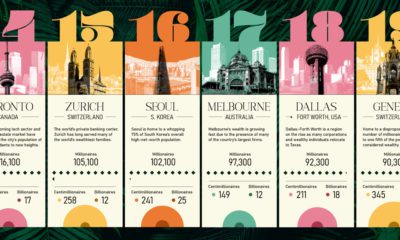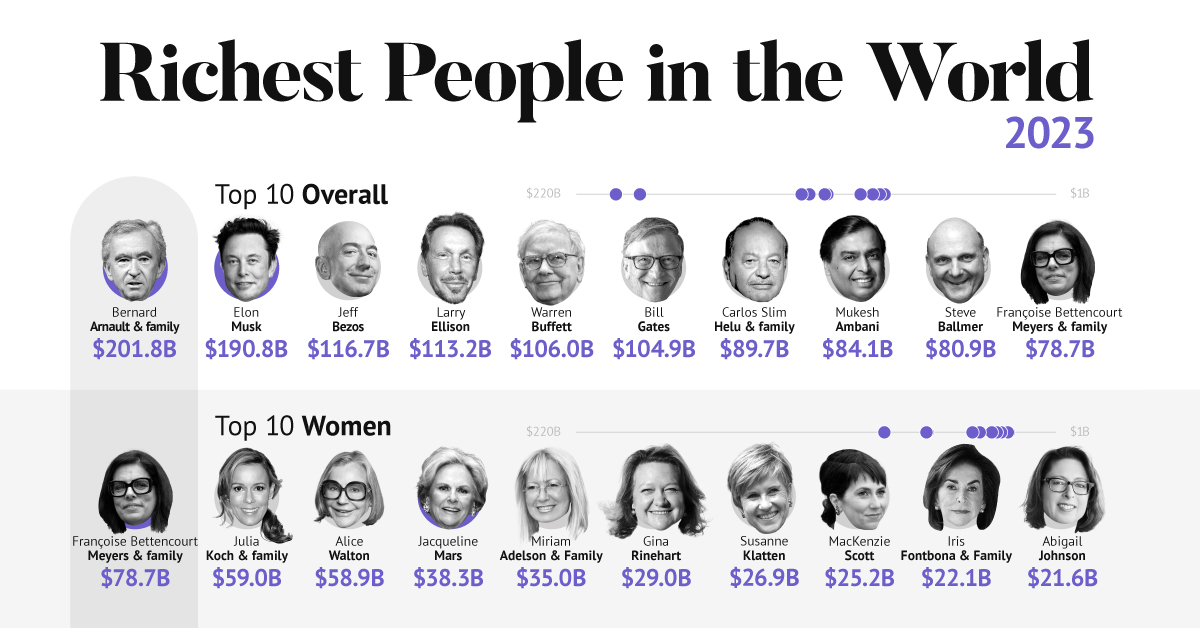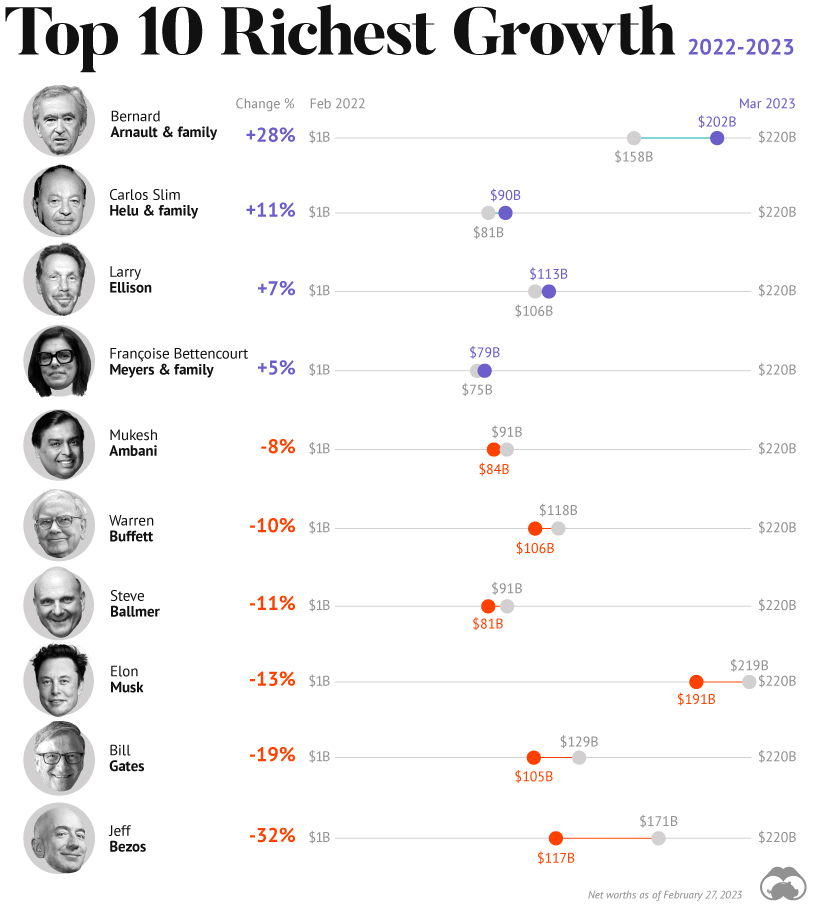A nest egg like that is a near-guarantee that you could surmount any curveball the world throws at you, whether it is an unexpected family emergency or anything else. While $1 million certainly sounds like a lofty milestone to many, it’s actually quite a common achievement:
Millionaire households in the U.S.: 11.3 million (8.95%) Total households in the U.S.: 126.2 million
And contrary to popular belief, to become a 401(k) millionaire, you don’t need to strike it rich with a lucky stock pick, or use a crystal ball to forecast the future of the market. Your best bet is to simply focus only on the factors you can control.
What You Can Control
Today’s infographic is from Tony Robbins, and it covers key points from his #1 Best Selling book Unshakeable: Your Financial Freedom Playbook, which is now available on paperback. It shows that the biggest winners in the financial game know that they can’t predict the future, and instead titans like Warren Buffett or Jack Bogle focus intently on the factors they can control, knowing that with the right approach they’ll thrive in almost any market. What are these crucial factors? By diligently working to take control of these four factors, your odds of attaining financial freedom are extremely high. Here is each factor in more depth.
1. Time
The power of compound interest is extraordinary, making time your best friend when it comes to building a battle chest of retirement savings. The current maximum contribution limit for 401(k)s is $18,500 per year, not including what is matched by your employer. If you maxed out on contributions and started investing early, you can hit $1 million before retirement even in sub-optimal market conditions: Time can make up for a lack of investing acumen. Wait until later, and things get very difficult – by age 50, you need market beating returns!
2. Discipline
If you’re taking advantage of the power of compound interest over a long period of time, whether that is 20, 30, or 40 years, it is inevitable that there will be bumps in the road:
Stock market corrections happen once a year, on average Bear markets happen once in every 3-5 years, on average Bear markets vary in length, but on average last one year
Through decades of investing, the fact is you are going to see bear markets – it is how you handle them that counts. Even when it’s the most tempting to sell, remember these facts:
Bear markets become bull markets The first 12 months of a new bull market can see crucial market gains Nobody can successfully time the market – not even the experts
In other words, having the discipline to hold through the turbulence can be the difference maker – and a key factor you can control in your journey to becoming a 401(k) millionaire.
3. Diversification
Another factor you control is portfolio diversification, and here are four ways diversification can minimize risk: A properly designed portfolio can weather any storm, and re-balancing it on a regular basis will force you to sell assets at market highs, while buying at low points.
4. Expenses
The fees on your 401(k) statement might not seem like much, but even 1% or 2% can make a big difference over the long term. For example: the value of $1 compounding for 50 years at 5% will be worth $11.50, but if it averages 7% it will be worth $29.50. That’s almost three times more! Expenses, both seen and hidden, can be a silent killer any portfolio, so keeping them to a necessary minimum can help you get to the promised land.
A Final Word
If becoming a 401(k) millionaire was easy, everyone could do it. But to be successful, you need to take control over factors like time, diversification, discipline, and costs – ideally with a qualified and experienced financial advisor and partner. Then, you need to stick to the plan and let the market do its work. – Tony Robbins on A lagging stock market dented these fortunes against high interest rates, energy shocks, and economic uncertainty. But some of the world’s billionaires have flourished in this environment, posting sky-high revenues in spite of inflationary pressures. With data from Forbes Real-Time Billionaires List, we feature a snapshot of the richest people in the world in 2023.
Luxury Mogul Takes Top Spot
The world’s richest person is France’s Bernard Arnault, the chief executive of LVMH.
With 75 brands, the luxury conglomerate owns Louis Vuitton, Christian Dior, and Tiffany. LVMH traces back to 1985, when Arnault cut his first major deal with the company by acquiring Christian Dior, a firm that was struggling with bankruptcy.
Fast-forward to today, and the company is seeing record profits despite challenging market conditions. Louis Vuitton, for instance, has doubled its sales in four years.
In the table below, we show the world’s 10 richest people with data as of February 27, 2023:
Elon Musk, the second-wealthiest person in the world has a net worth of $191 billion. In October, Musk took over Twitter in a $44 billion dollar deal, which has drawn criticism from investors. Many say it’s a distraction from Musk’s work with Tesla.
While Tesla shares have rebounded—after falling roughly 70% in 2022—Musk’s wealth still sits about 13% lower than in March of last year.
Third on the list is Jeff Bezos, followed by Larry Ellison. The latter of the two, who founded Oracle, owns 98% of the Hawaiian island of Lanai which he bought in 2012 for $300 million.
Fifth on the list is Warren Buffett. In his annual letter to shareholders, he discussed how Berkshire Hathaway reported record operating profits despite economic headwinds. The company outperformed the S&P 500 Index by about 22% in 2022.
How Fortunes Have Changed
Given multiple economic crosscurrents, billionaire wealth has diverged over the last year. Since March 2022, just four of the top 10 richest in the world have seen their wealth increase. Two of these are European magnates, while Carlos Slim Helu runs the largest telecom firm in Latin America. In fact, a decade ago Slim was the richest person on the planet. Overall, as the tech sector saw dismal returns over the year, the top 10 tech billionaires lost almost $500 billion in combined wealth.
Recent Shakeups in Asia
Perhaps the most striking news for the world’s richest centers around Gautam Adani, formerly the richest person in Asia. In January, Hindenburg Research, a short-selling firm, released a report claiming that the Adani Group engaged in stock manipulation and fraud. Specifically, the alleged the firm used offshore accounts to launder money, artificially boost share prices, and hide losses. The Adani Group, which owns India’s largest ports—along with ports in Australia, Sri Lanka, and Israel—lost $100 billion in value in the span of a few weeks. Interestingly, very few Indian mutual funds hold significant shares in Adani Group, signaling a lack of confidence across India’s market, which was also cited in Hindenburg’s report. As a result, Mukesh Ambani has climbed to Asia’s top spot, controlling a $84 billion empire that spans from oil and gas and renewable energy to telecom. His conglomerate, Reliance Industries is the largest company by market cap in India.













